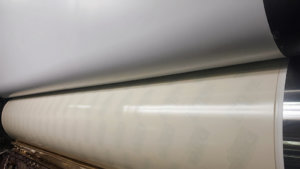How Does A Hot Melt Adhesive Roll Coater Work?

How Does Roll Coating Work?
Of course, you may not even know where to begin with a hot melt adhesive roll coater. Often, it’s difficult to seek out machines like these without understanding how they work. Moreover, it’s hard to evaluate the quality of a machine roller without having basic knowledge regarding their workings.
Typically speaking, we use a hot melt adhesive roll coater to apply liquids to parts. The liquids involved are industrial in nature, but there is not a single “type” that they are confined to. A roll coater will usually apply materials like
- Varnishes
- Paints
- Oils
However, you should not feel confined to using such machines with these specific liquids. The process itself is relatively simple in theory, relying transference. Nonetheless, there is one aspect of the application that’s difficult to predict. The process you’re looking for is film splitting. This means that some of the liquid will apply to the surface without issue, while part of it will remain on the roller itself. Now, there are ways that you can somewhat control the amount of liquid applied to a surface—but those ways are dependent on the liquid used and substrate utilized.
The question is, how do you control the thickness of the liquid applied? Otherwise, you could end up with a liquid that never dries, or an uneven surface. There are fortunately ways to manage this, though they can certainly vary. The type of mechanism used can affect the machine’s ultimate outcome. It also potentially affects the overall value of the machine.
How Do We Control the Liquid’s Thickness?
As previously mentioned, we use different approaches and mechanisms to control the thickness of a liquid’s coating. These include:
- The Metering Roll. The metering roll essentially refers to the manner in which we manage coating thickness. We execute this through the gaps between the rollers. There is a metering roll and a coating roll, with the liquid being held between the two. As you adjust the gap between the rollers, the thickness of the liquid itself changes. Often, you pay more for a metering roll; however, this is because it offers several benefits. If debris enters the liquid, it can be more easily handled and caught between the rollers. Additionally, the rolls operate at similar speeds, which means that it’s easier to apply sheer liquids. These include latex. If necessary, you can adjust the speeds of the rollers, which may make it easier to avoid the creation of foam.
- Reverse Roll Coating. When you’re attempting to execute reverse roll coating, you will feed a part’s surface through the hot melt adhesive roll coater. The roll coater applies liquid while at the same time wiping it down. Sometimes, this creates a puddling effect, but this tends to flow onto the coating part as it moves across the substrate. Usually, this method applies thicker liquids more smoothly. However, this process can cause the liquid to become overheated, which is why some stray way away from it.
- Transfer Rolls. Transfer rolls function similarly to metered rolls. One of the main differences is that transfer rolls utilize more rolls, resulting in a more expensive machine. When we use these rollers, a film split occurs every time. This means that these rollers are more effective when you want thinner coatings. Some materials also just don’t work well with metered rolls; in this case, the metered roll is metal or another hard surface, while we apply the coating through a separate application roll.
- Metered Blade. This process relies on the rotation of the roller, which carries the liquid. A limited amount of liquid can pass through the gap between the metered blade and the surface. Ultimately, excess liquid returns to the original reservoir. The metered blade is maneuverable, which changes the thickness of the liquid. This mechanism is relatively easy to use, doesn’t require much space, and allows you to control the thickness of the liquid more easily.
How Do I Manage Roll Coating with a Hot Melt Adhesive Roll Coater?
As you can see, there are many different options available when it comes to selecting a hot melt adhesive roll coater. Adhesive coating technologies vary, and there isn’t a single approach that serves every project. While you could purchase your own slot die coating equipment, you may very well require alternative versions for another project later. For that reason, many business owners choose to work with contract manufacturers like CTI instead.
Contract manufacturers cover roll to roll coating services for small business owners on a regular basis. This is because it’s often less expensive to work with a contract manufacturer as opposed to buying your own permanent equipment. Not only must you buy your own equipment under these circumstances; you must also hire experienced employees or train inexperienced employees to operate the equipment. Most of the time, it’s more efficient and less expensive to work with contract manufacturers directly.
If you’d like to learn more about the process and what CTI can offer you in terms of machine roller technology, call us at 419-924-5566 or contact us here. We’ll help you find solutions for your roll coating needs!
- << < Previous Post
- 1
- 2
- ...
- 67
- ...
- 241
- 242 Next Post > >>
